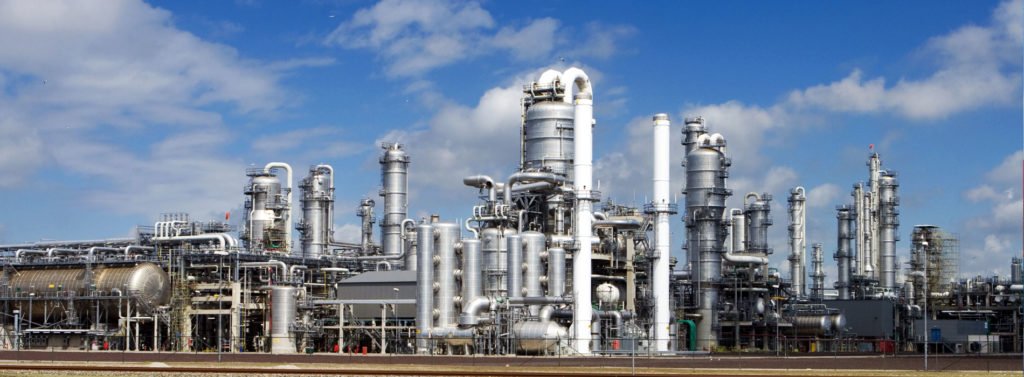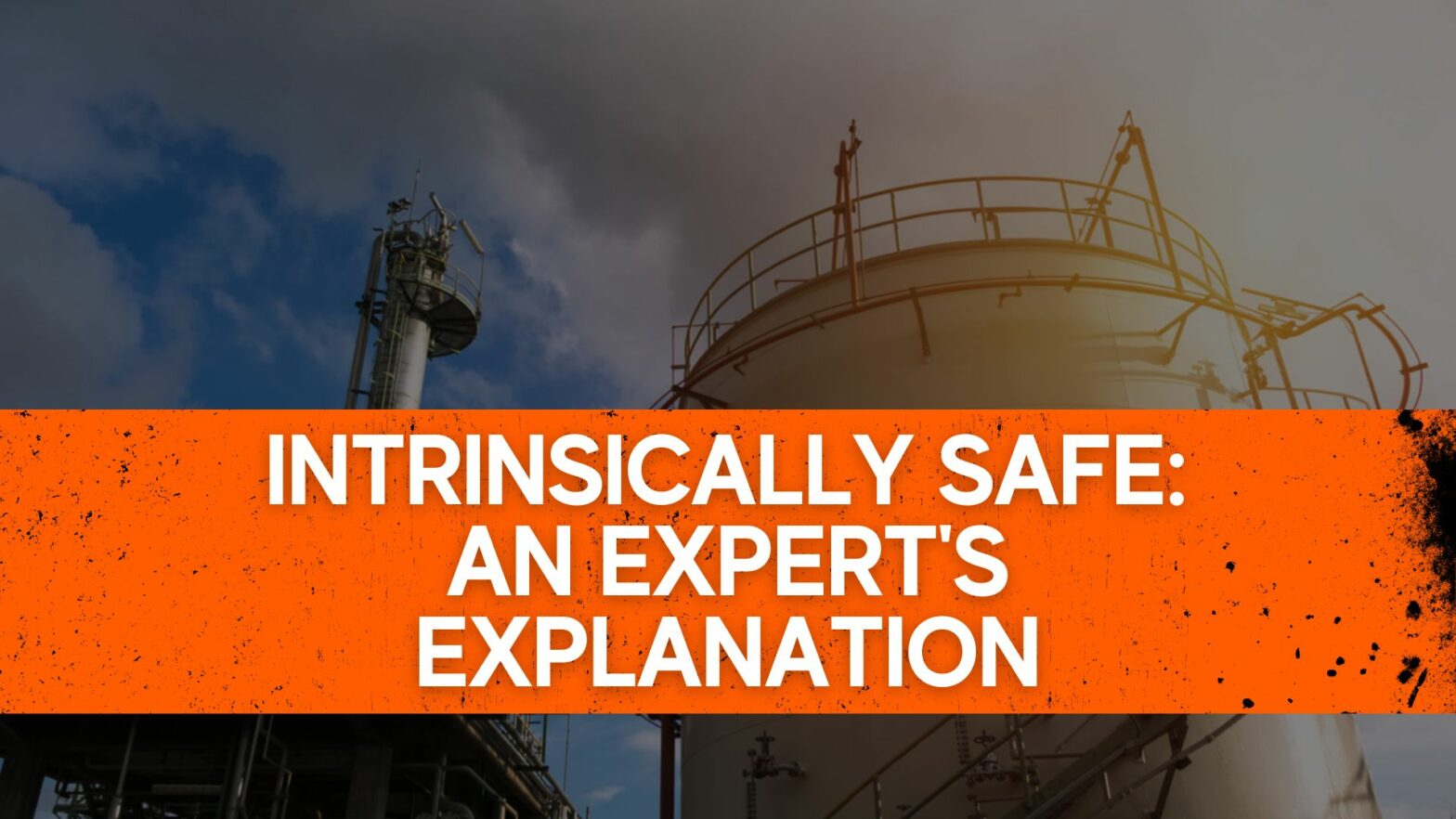Executive Summary
Intrinsically Safe is a safety design concept applicable to equipment or devices meant for installation or operation in hazardous areas. This white paper defines Intrinsically Safe design, relevant standards and certifications, as well as the concept of explosion proof. Worldwide, regulators require electrical equipment deployed in potentially explosive environments to have internal components that cannot easily cause fire or an explosion by sparking or disseminating heat.
A Detailed Explanation of Intrinsically Safe
The main objective of intrinsic safety is to ensure that internal equipment components cannot discharge electrical charges strong enough to cause an explosion or generate heat capable of igniting an explosive environment. Engineers acknowledge the fact that the internal circuitry of such systems is not safe by itself, so they make a deliberate effort to enhance the design and prevent costly fire disasters. Intrinsically Safe design is mandatory for devices operating in environments with substances that may catch fire easily, such as gases, vapor, and fuels.

The Principle Behind Intrinsically Safe Design
By principle, Intrinsically Safe aims at minimizing ignition energy in an electric circuit. Such a design limits the amount of electrical energy to the extent that it may not cause an inferno under normal and foreseeable fault conditions when the equipment is an explosion-prone area. Engineers must also design electrical systems in hazardous spaces (as well as interconnected apparatus in risk-free locations) such that the open circuit voltage is minimal and short circuit current is below levels that may ignite a flammable substance in case a short occurs or a circuitry component heats up.
Some Important Intrinsically Safe Circuitry Considerations for Explosive Environments
The design of every single electric component of equipment meant for an explosive environment must incorporate the I.S concept. For example, designers should take Zener diodes’ safety factor into account when working out ratings. Capacitors block DC voltage, while high breaking capacity fuses are connected to the circuit to enhance safety. If Intrinsically Safe and non-Intrinsically Safe circuits are in use, transformers and optocouplers are added to separate them.
Intrinsically Safe and Explosion Proof are not the Same Thing
An Intrinsically Safe device will not cause an explosion, while any explosion proof apparatus will not come apart or explode in the event of an eruption inside it. The latter is a containment technique based on the design of the equipment’s enclosure. It’s typically the better option in high-power applications where it’s impossible to design internal circuitry components in line with the Intrinsically Safe standard. For instance, some flash camera capacitors discharge higher energy levels than acceptable under intrinsically safe directives.
An Explosion Proof device has the following features:
- The ability to tolerate an explosion within its enclosure
- Allowance for gas and heat to escape into the environment
- Sturdy, heavy casing materials
What is a Hazardous Area?
A hazardous or explosion-prone area in the world of electrical engineering is an environment with high amounts of flammable substances (combustible particles, gases, vapor, etc.). These materials can potentially react with any electrical apparatus deployed within the dangerous environment, causing explosions and compromising the safety of personnel.

Hazardous area industries include oil refineries, mining, paint manufacturing, distilling, chemical plants, and spray booths. Flammable vapors and gases are the main safety issue in these industrial scenarios, and when they mix with oxygen in the air, they can establish an explosion-prone environment. Food processing factories, grain handling facilities, recycling operations, and even flour mills generate combustible dust, which is why these are hazardous locations too.
Hazardous Location Classification Systems
Each country has a set of directives that engineers must consider when deploying electrical equipment in environments prone to explosions or fire accidents. These standards or certifications include:
National Electric Code (NEC)
North American companies refer to the National Fire Protection Association (NFPA) hazardous area classifications when selecting intrinsically safe equipment for their operating environment. Articles 500 to 506 of NFPA Publication 70 (NEC) contain the guidelines that the Occupational Safety and Health Administration (OSHA) enforces.
According to NEC, a Class 1 location has or likely contains flammable vapors and gases in proportions sufficient for an explosion or ignition. Class 1, Division 1 defines areas where these combustible substances may be present under normal operating circumstances. It also refers to any regular gas or vapor exposure due to leakage or system maintenance activities. Similarly, the classification applies to locations where faulty equipment may release ignitable gas or vapor into the air, potentially causing electric apparatus to fail.
A Class 1 Div 2 designation defines several scenarios that involve handling volatile flammable liquids or gases. It applies to locations where these hazardous substances cannot escape the containers or systems storing them except during an unexpected breakdown or rapture. Another application of the category is where flammable gases or vapors in the air cannot reach ignition levels because there are positive mechanical ventilation systems in place. In this case, ventilation equipment failure constitutes an explosion risk.
ATEX Certification
The European Committee for Standardization formulated ATEX as the safety standard for equipment intended for deployment in explosion-prone environments within the EU. The certification is similar to NEC requirements, and it covers a range of flammable substances, including gases, combustible dust, and vapors. All apparatus meant for use in Europe must meet ATEX guidelines.

The ATEX directive divides equipment into several groups. Group I defines apparatus for deployment in underground parts of mines as well as in any components of such mines that are hazardous due to the presence of firedamp or ignitable dust. Group II classifies machines or devices for operations in dangerous locations with explosive atmospheres. The standard also specifies mandatory protection levels in equipment categories M1 and M2.
As for category 1 of equipment group II, apparatus for use in atmospheres with explosive gases, vapors, or moisture must be built such that any rare malfunction of the equipment does not activate potential sources of ignition. Protection measures are necessary to ensure that equipment exteriors should not heat up beyond the stated maximum surface temperatures under all circumstances.
The IECEX Standard
The International Electrotechnical Commission Explosive (IECEx) is an international standard that several countries have adopted to regulate the safety of equipment meant for installation or use in an explosive setting. Compliant apparatus can be used or sold in multiple countries.
IECEx defines ignition sources, including hot particles and gases, and it divides gases into several groups. Hydrogen and acetylene belong in category IIC, while ethene and dimethylether are group IIB gases. Group IIA includes propane and acetaldehyde.
Conductive dust, such as graphite, are in group IIIC, while milk powder and other fine non-conductive particles are in group IIIB. Category IIIA covers fibers and flyers.
The standard has several equipment protection levels (EPL) that dictate which zones devices or machines may be used based on explosion risk assessment. EPL Ga Zone 0 applies where two malfunctions cause abnormal equipment operation, while Gb Zone 1 designates situations where normal functioning is retained after a single failure.
Why Using Hazardous Area Certified Hardware is Essential
The deployment of intrinsically safe hardware in a potentially explosive atmosphere is vital to the safe, sustainable, and profitable operation of organizations across a broad array of industries. Firstly, installing hazardous area certified devices or instruments helps to minimize the risk of fire, boosting personnel safety and protecting valuable property. Secondly, it’s a matter of compliance with enforceable regulations, and defiance can result in hefty penalties.
Conclusion
Intrinsically safe equipment design is the first line of defense against fire accidents in hazardous operating conditions. Where it’s impossible to rule out explosion within a device, engineers can turn to explosion-proof construction to avert disaster. Either way, all such apparatus must meet the appropriate regulatory standards, from NEC and ATEX to IECEx. Feel free to visit our Intrinsically Safe Store for high-quality hazardous area certified products!



























It’s hard to find knowledgeable people about this subject, but you
sound like you know what you’re talking about! Thanks
Yes, this is a Good one
Yes, this is a Good one